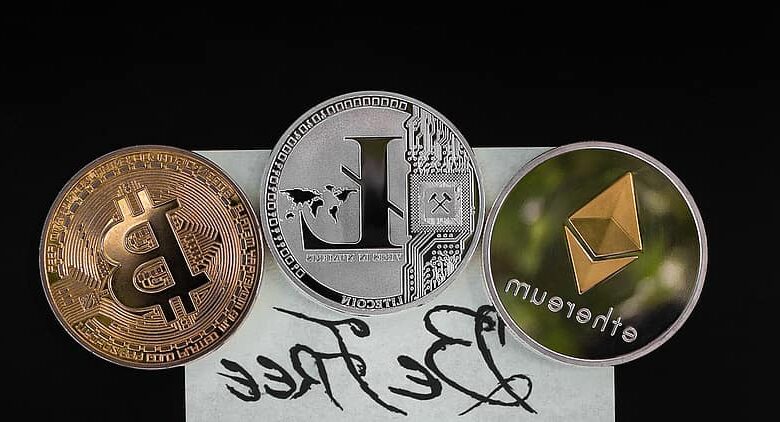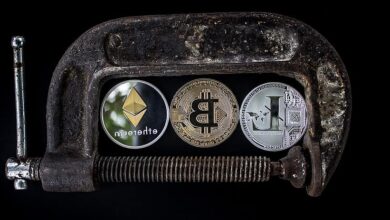Tokenomics: Design and Value in Digital Assets

The rapid ascent of the cryptocurrency and blockchain ecosystem introduced a fundamental new financial concept: the digital token. These tokens are far more sophisticated than simple digital currencies. They represent the specialized, programmable financial assets that are essential to power decentralized applications and establish new models of digital ownership and governance.
Unlike fiat money, where issuance is controlled by a centralized authority, the creation, distribution, and overall economic structure of a crypto token are meticulously defined by its underlying code. Tokenomics is the specialized, complex field dedicated to studying the economic design and incentive structures that govern a digital asset.
It examines how the supply, demand, distribution, and utility of a token fundamentally determine its value proposition and its long-term viability within a specific decentralized network. Mastering the principles of tokenomics is absolutely crucial for investors seeking to assess the intrinsic value of a digital asset.
It is the necessary lens through which one must analyze the potential for sustainable growth and the economic resilience of any emerging decentralized project. Understanding this structure is the ultimate key to unlocking the future of digital asset valuation.
The Genesis of Token Economic Design
The core challenge of any decentralized network is ensuring its stability, security, and utility without the reliance of a central bank or governing body. Tokenomics provides the carefully engineered system of rules and incentives to meet this complex challenge. It blends principles of monetary theory, game theory, and computer science. The design must encourage participants to act honestly and productively for the collective good of the network.
The economic model must first clearly define the token’s supply schedule. This includes the initial creation of the tokens and the rate at which new tokens are introduced into the circulating supply. This predictable issuance is vital for establishing the asset’s long-term scarcity profile. Predictability builds investor trust.
The model must also establish a system of utility or demand. The token must have a necessary, internal function within its specific ecosystem. This required use creates organic demand for the asset, preventing the token from being merely a speculative instrument. Utility underpins the asset’s fundamental value.
Effective tokenomics ensures a sustainable economic loop. The token’s utility drives demand, which supports its price. The price then ensures that the economic incentives for securing the network (like staking rewards) remain attractive enough to encourage continued participation. This system creates a positive feedback cycle.
Fundamental Supply Characteristics
The supply model is the most critical element of tokenomics, defining the asset’s monetary policy. This policy directly dictates the token’s long-term scarcity and its resistance to inflation. Supply is often managed through code-enforced rules.
A. Total Supply Cap
The Total Supply Cap is the hard, absolute limit on the total number of tokens that will ever be created in the history of the network. Bitcoin, with its 21 million BTC limit, is the classic example of a fixed, maximum cap. This feature makes the asset deflationary in the long run. A fixed cap is highly attractive to investors seeking a digital store of value.
B. Inflationary and Deflationary Models
An Inflationary Model means that the token’s supply continues to increase indefinitely over time, though often at a decreasing rate. The network uses this continuous issuance to pay for security (e.g., block rewards for validators). This controlled inflation is analogous to traditional fiat monetary policy.
A Deflationary Model means that the token’s circulating supply actively decreases over time. This is often achieved through a “burning mechanism.” Burning permanently removes a portion of transaction fees from circulation. If the burn rate exceeds the issuance rate, the asset is functionally deflationary. This scarcity drives long-term price potential.
C. Vesting and Lock-up Schedules
Vesting and lock-up schedules govern the distribution of tokens allocated to founders, early investors, and development teams. These tokens are released slowly over a predetermined period (e.g., four years). This prevents a sudden, massive sell-off from early participants. Controlled release maintains market stability and reduces price volatility from concentrated supply shocks.
D. Initial Distribution Mechanisms
The method of initial distribution is critical for ensuring the network starts with a fair and decentralized ownership base. Methods include initial coin offerings (ICOs), initial decentralized exchange offerings (IDOs), and simple airdrops to existing users of other platforms. The mechanism chosen reflects the project’s commitment to equitable distribution.
Utility: The Engine of Demand

For a token to maintain sustainable value beyond pure speculation, it must possess strong, intrinsic utility within its ecosystem. This utility creates non-speculative, organic demand for the asset. Utility provides the fundamental economic rationale for the token’s existence.
E. Transaction and Fee Utility
The token serves as the essential currency for paying transaction fees (gas fees) on the network. Ethereum’s Ether (ETH) is the primary example. Users must acquire the native token to execute smart contracts or send transactions. This mandatory use creates constant, necessary demand directly tied to network activity.
F. Governance Utility
Governance tokens grant holders the right to vote on key decisions affecting the future development and operation of the decentralized protocol. These decisions often involve proposals for software upgrades, fee structures, or the allocation of community funds. Holding the token provides a tangible stake in the project’s direction. The token becomes a measure of political power within the decentralized autonomous organization (DAO).
G. Staking and Security Utility
In Proof-of-Stake (PoS) systems, tokens must be “staked” (locked up) as collateral to participate in transaction validation. This staking mechanism secures the network and is rewarded with a yield. This utility creates a strong incentive to hold the token long-term, reducing the circulating supply available for trading. Staking provides network security and a revenue stream.
H. Access and Exclusive Rights
Some tokens provide access to specific decentralized services or exclusive features within an application (dApp). This could include access to discounted services, premium platform features, or early participation in new projects. The token acts as a digital key necessary to unlock specific value within the ecosystem.
Tokenomics in Decentralized Finance (DeFi)
Tokenomics is particularly complex and critical in the Decentralized Finance (DeFi) sector. DeFi protocols use sophisticated incentive structures to manage liquidity, control risk, and encourage specific user behaviors. The economic design must function perfectly to avoid catastrophic failure.
I. Liquidity Mining and Farming
Liquidity Mining and Yield Farming are strategies where users are rewarded with newly issued governance tokens for providing liquidity to a decentralized exchange (DEX). These tokens act as an incentive to bootstrap the platform’s initial liquidity. The high yield encourages capital to flow into the nascent protocol.
J. Buy-and-Burn Mechanisms
Many DeFi protocols implement a buy-and-burn mechanism to support the token’s value. A portion of the protocol’s transaction revenue is used to automatically purchase the native token from the open market. These purchased tokens are then permanently removed from circulation (burned). This continuous reduction in supply exerts upward pressure on the price.
K. Protocol Owned Liquidity (POL)
Protocol Owned Liquidity (POL) is an innovative model where the DeFi protocol itself owns and controls a portion of the liquidity used for trading. The protocol incentivizes users to sell their liquidity pool tokens to the protocol in exchange for the native governance token. This reduces the protocol’s reliance on external, volatile liquidity providers.
Evaluating Tokenomic Health and Risk

Assessing the long-term viability of a project requires a rigorous evaluation of its tokenomic health. A poorly designed economic model will inevitably lead to instability and failure, regardless of the underlying technology’s sophistication. Financial analysis of the token is non-negotiable.
The circulating supply relative to the fully diluted supply is a key metric. A large difference suggests a massive influx of new tokens is imminent, potentially leading to significant price volatility. Investors must understand the complete, future emission schedule.
The sustainability of the yield offered by staking or farming must be critically examined. If the high yield is entirely paid out in newly issued, inflationary tokens, the price of the token may collapse due to excess supply. The yield must be backed by genuine protocol revenue to be sustainable.
Governance structure is also a major risk factor. If control is too highly concentrated in the hands of a few large holders (whales), the network is functionally centralized. This high concentration increases the risk of coordinated action against small investors. True decentralization is crucial for long-term health.
Conclusion
Tokenomics is the specialized economic discipline that governs the complex design and incentive structure of digital assets.
The supply model, whether fixed, inflationary, or deflationary, dictates the token’s long-term scarcity and its resilience against monetary devaluation.
Strong utility is necessary, creating organic, non-speculative demand by requiring the token to pay transaction fees or grant specific platform access.
Vesting and lock-up schedules are essential mechanisms that ensure the controlled, gradual release of tokens to maintain market stability.
Governance tokens provide holders with voting rights, granting them a tangible, vested political stake in the future direction of the network.
DeFi protocols utilize tokenomics for complex incentives like liquidity mining, which is used to efficiently bootstrap necessary initial market liquidity.
The ultimate health of a token is measured by the sustainability of its yield and the verifiable decentralization of its governance structure.
A rigorous analysis of a token’s emission schedule and supply cap is necessary to accurately assess its long-term investment viability.
Tokenomics transforms the abstract concept of digital scarcity into a transparent, code-enforced, and valuable economic reality.
Understanding the complex economic engineering is the necessary step for making informed decisions in the evolving decentralized financial ecosystem.
The field ensures that the economic interests of all participants are meticulously aligned with the long-term security and success of the network.
Mastering this blend of finance, game theory, and cryptography is the indispensable key to valuing the future of digital ownership and value transfer.


